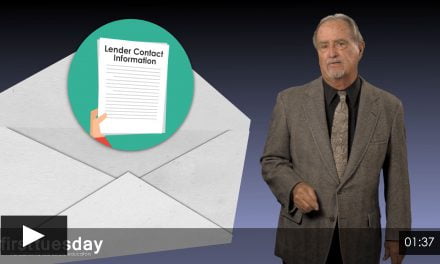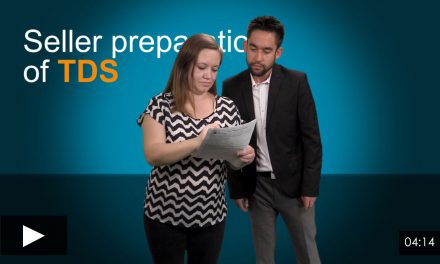How lenders are profiting the most from historically low note interest rates.
The worst of times are the best of times for lenders
Mortgage lenders are profiting greatly from low interest rates, according to data recently released by the Mortgage Bankers Association (MBA).
Related article:
Los Angeles Times: Bank coffers swelling with profits from mortgage sales
While homebuyers are enjoying historically low note rates, lenders are the primary beneficiaries. The note rate is also known as the nominal interest rate, the rate written on the homebuyer’s promissory note and at which the homebuyer agrees to repay the lender. Though the note rate is very low, real interest rates are very high.
Lenders take profits on loans they originate in a number of ways, including:
- a loan origination fee, approximately 1% of the loan amount;
- the 0.25% yield spread premium (YSP), the margin between the Fannie Mae or Freddie Mac (collectively Frannie) par rate and the note rate paid by the homebuyer; and
- the yield on the Frannie resale of the mortgage, bundled by Wall Street bankers into mortgage-backed bonds (MBBs) and sold off to pools of investors. This bond market yield ranges between an additional 0.5%-0.8% spread above the par rate, equivalent to 2%-3% of the loan amount in instant profit.
Thus, lenders and Wall Street bankers pull profits on each mortgage equal to roughly 5% of the loan amount. Much of this profit is at the expense of the homebuyer who pays a jacked-up note rate. Many lenders also continue to pad loan agreements with garbage fees, charging borrowers for services performed once and billed twice, or never performed at all.
Every business is due a fee for services performed. However, lenders are now disingenuously charging borrowers more than is reasonable — and more than they have historically charged — in interest, because buyers and their agents allow them to do so. This conduct is now shifting ever greater amounts of money from homebuyers to lenders.
These profits have gone largely unnoticed by homebuyers, who are being told the interest rates on their home loans are a steal, cheap by any standard. True, the note rate is lower than ever at 3.75%, But the margin existing between the note rate charged homebuyers and the par rate for resale of the loan to Frannie is now typically 0.25%.
Collectively, banks set the par rate at 3.53% when a 3% par rate is more in line with historical profit margins. A closer look at mortgage lenders’ recent profits from the origination to bond market investor reveals a substantial increase in earns over prior years.
According to the MBA, in the first quarter of 2012, lenders initially profited an average of $1,654 on each loan just between its origination and sale on the secondary mortgage market. This compares with an average of $1,093 in the first quarter of 2011. For a $200,000 FRM at 3.75% for 30 years, the extra padding on interest payments for the 0.25% YSP adds $10,000 to payments over the life of the loan. Monthly payments at 3.75% on a $200,000 mortgage when sold at 3.5% par makes the loan worth $206,260 in the secondary money market – a profit of $6,260 on the loan for the lender. This YSP is taken on top of the $2,000 origination fee.
The same profiting game is visible in refinance transactions. The report suggests lenders are keeping rates for refinancing homeowners “higher than necessary,” especially so in the case of Home Affordable Refinance Program (HARP) modifications since all lenders conscientiously refuse to refinance a high LTV loan originated and serviced by another lender.
A look at the numbers:
- lender profits increased 51% between the first quarter of 2011 and the first quarter of 2012; and
- lenders’ secondary mortgage market income increased 31% between the first quarter of 2011 and the second quarter of 2012.
Average lender profits from the sale of a loan in the secondary mortgage market was the highest in the second quarter of 2012 since the Mortgage Bankers Association began tracking this data in 2008.
My, what a big risk premium you have!
With all this talk of lender riches, perceptive readers may be left wondering how lenders are able to turn such a hefty profit in such a weak economy. Just how are lenders calculating these interest rates and lining their wallets?
Interest rates for 30-year fixed rate mortgages (FRMs) are determined by:
- the core rate of inflation, generally visible in the 10-year Treasury Note (10-year T-Note) rate; plus
- the risk premium rate, the lender’s safety net against borrower default, which adjusts depending on the homebuyer’s qualifications — his creditworthiness and the security of the subject property.
Related chart:
In addition to covering the lender from the risk of a borrower default, the risk premium rate acts as the lender’s profit cushion, or YSP. Any percentage beyond this amount represents an inflated charge on the homebuyer, common in today’s market.
The homebuyer’s only strategy to avoid this rate bump is to always have a second, parallel, loan application running with another lender. When confronted at closing with the lender’s last-minute inflation hike, the buyer can resort to the backup loan application to fund his purchase.
Currently, the note rate for California mortgage originations for the average 30-year conventional commitment rate is 3.75% – a huge margin above the combined core 1.44% 10-year T-Note rate and the historical 1.4% risk premium rate used to set a mortgage’s par rate.
Related articles:
Taming animal spirits in client buy-sell behavior
Sweating off the profit margin
Consider the interest rates offered to the same borrower on a 30-year FRM. Wells Fargo offers a rate of 3.625%; Chase and GMAC both advertise a 3.5% interest rate for the same type of loan. However, while lenders often advertise par rates, they adjust these rates upward 0.25% at the loan closing. Still, these rates are negotiable and vary from lender to lender.
Why the difference? This is competitive pricing among lenders, all of whom still manage to get their pound of flesh in:
- loan origination fees from borrowers;
- YSPs also from borrowers; and
- from bond market participation through stock broker subsidiaries (Merrill, Morgan, etc.), the margin between the combined rates for the 10-year T-Note and risk premium of 2.8%, and the homebuyer’s note rate.
This means homebuyers should shop around more than ever before to arrange purchase-assist financing. Submitting loan applications to fewer than two lenders today is foolhardy. Lenders’ profit margins, like those of any other vendor, are large and quite flexible.
Simply put, there’s wiggle room in that note rate — from 0.5%-0.8% of it today. Having a backup loan application with a second lender makes the difference between being fleeced at closing and coming out with the interest rate closest to the 2.8% bond market rate Wall Street investors receive on their investment in that loan.
Why let lenders be the only ones benefitting from low interest rates? Advise your buyers to submit loan applications to at least two different mortgage lenders while continually insisting that the note rate be the same as the par rate. Switch to another lender if the first one does not agree.
When the lead lender mechanically bumps the note rate above par at closing, your buyer will only be able to get that par rate if they have the added leverage of a backup lender ready to do business.
Related article:















This isn’t surprising, and truthfully, if a buyer gets a bad deal it’s on them for not being smarter, especially after what’s occurred in the last few years. However, this is why I often recommend that people check out local banks rather than the large banks first because home town banks are less reluctant to get bad publicity by taking advantage of someone.